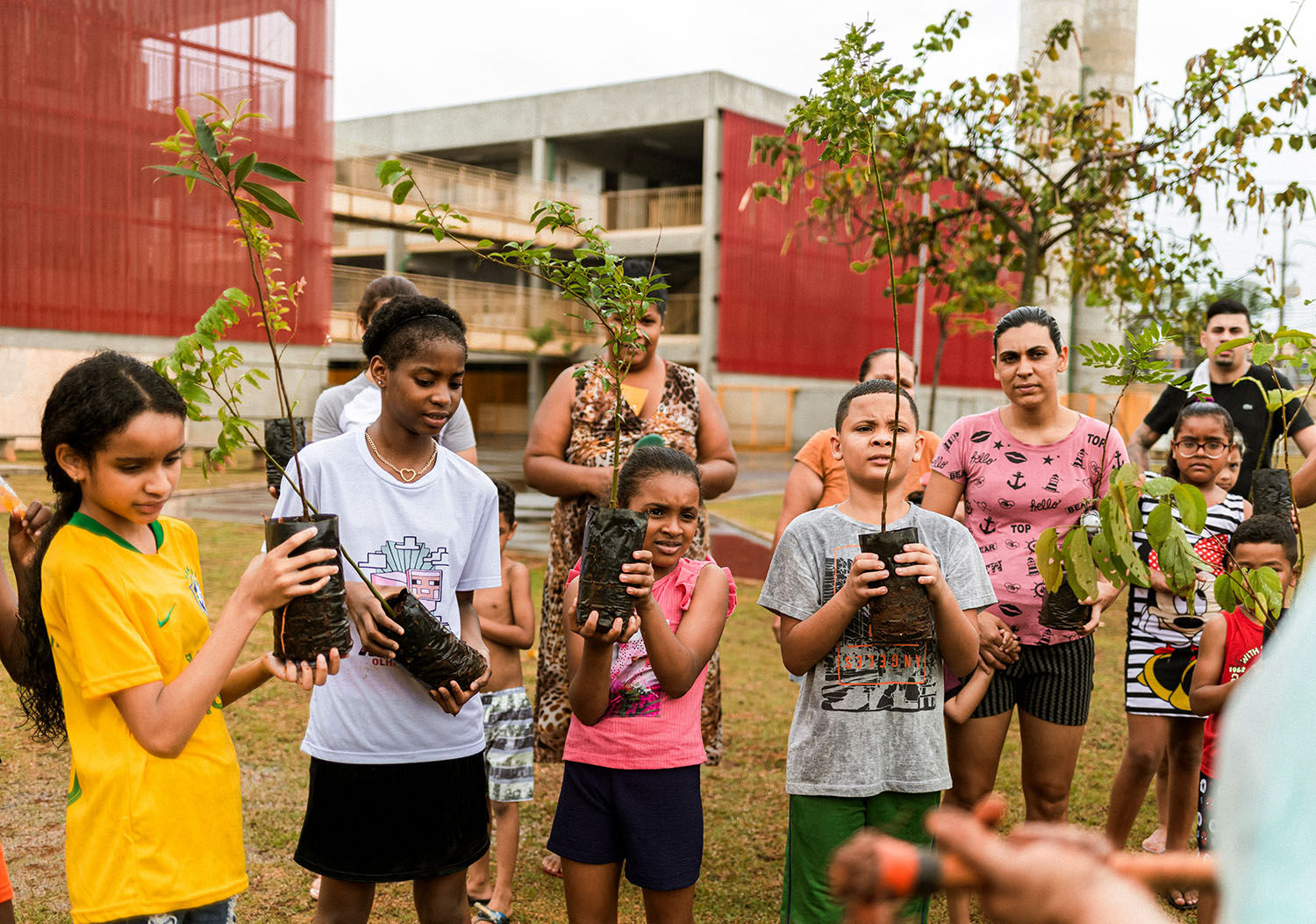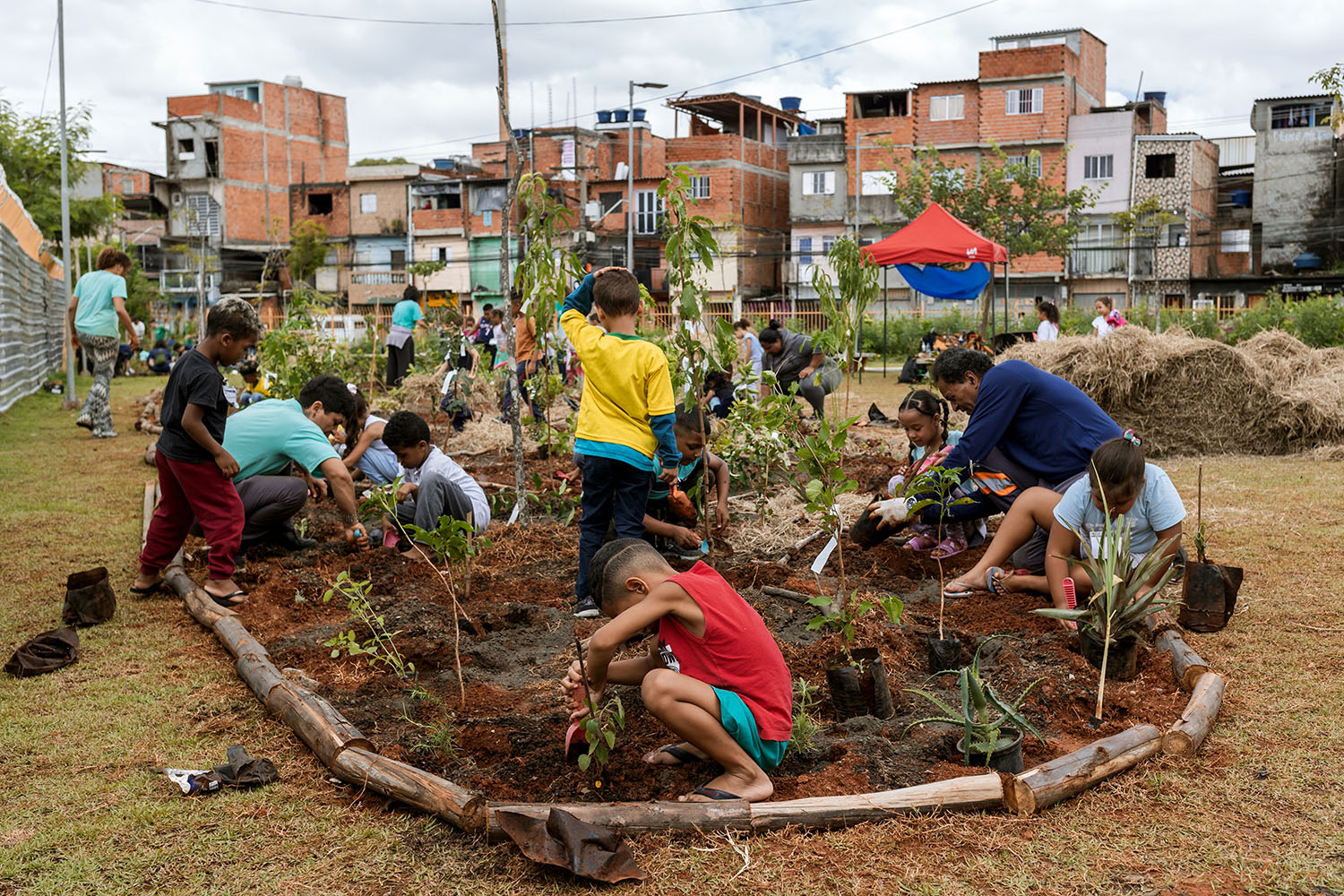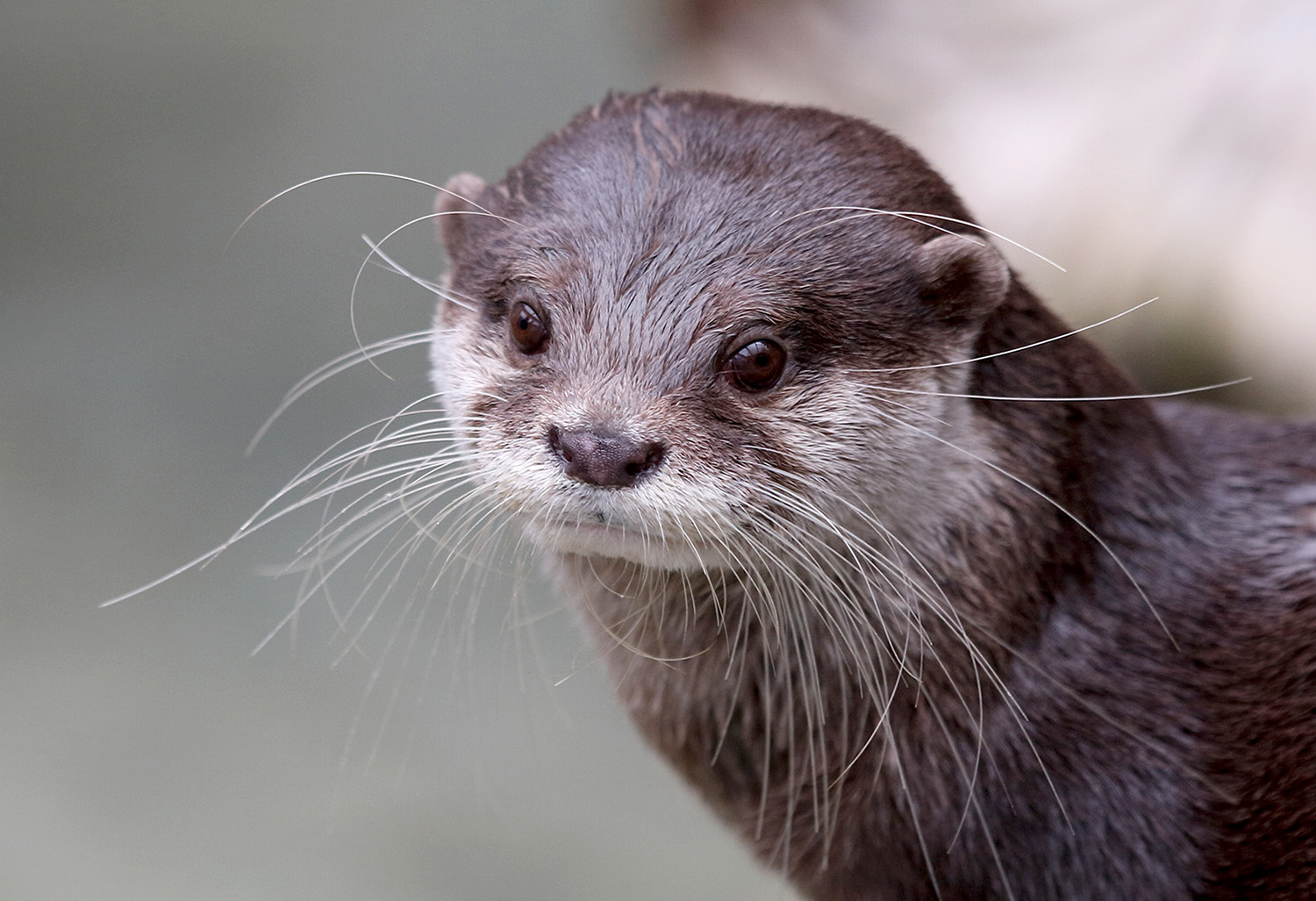Brazilian Students Plant Mini Forests
Bit by bit, children are helping to restore the Brazilian Atlantic Forest and its ecosystem.

Courtesy of SUGi
Students and adults listen to an orientation before starting to plant a mini forest.
Schoolchildren are bringing back the Brazilian Atlantic Forest one tree at a time and one mini forest at a time.
A project called Formigas de Embaúba helps schoolchildren in Brazil’s city of São Paulo plant mini forests of native plant species to reforest parts of the city landscape and connect young people to nature. Formigas de Embaúba is funded by the SUGi Project, a nonprofit organization that works with communities around the world to plant native forests.
The Formigas program gets its name from ants that live in the embaúba tree, also called the trumpet tree. The ants live inside the tree’s hollow trunk, which provides protection from predators and sweet sap to eat. If other insects or animals come to eat the tree’s leaves, the ants will swarm out and bite the attacker, causing it to flee. In this way, the ants and the tree live in a symbiotic relationship, meaning they work together to protect and take care of each other.
This little but mighty ant is the symbol for the mutual benefit humans and trees can achieve. When people work together to take care of trees and the environment, they also reap the benefits of nature, explained Rafael Ribeiro, who is the cofounder of the Formigas program.
“We are rebuilding an ecosystem of species that evolved together, one protecting the other. The plants attract birds and butterflies. A habitat is created for fauna that don’t have space [elsewhere] in the city,” Ribeiro told Folha de São Paulo, a local newspaper. “Despite being on a small scale, it is in fact a forest.”

Courtesy of SUGi
Students plant a mini forest near their school in São Paulo, Brazil.
As of 2024, children in the program have planted 15,000 trees and created 23 forests. These mini forests range from about 1,600 square feet (150 square meters), which is a little smaller than a tennis court, to 16,000 square feet (1,500 square meters), which is about the size of an ice hockey rink.
“It was the first time I planted a tree, and I am really happy and proud,” said one of the students in a short documentary about the program. “I discovered that the plants and the city can exist together. It can improve human lives and make the air fresh.”
The students are also learning about environmental care and human impacts on local ecosystems. While Brazil’s Amazon Rainforest is known worldwide, the Atlantic Forest is another important rainforest ecosystem that spans the country’s east coast. The Atlantic Forest is home to many animals, like the golden lion tamarin and the red-tailed parrot. Unfortunately, about 88 percent of the forest has been lost to deforestation from human activity, according to World Wildlife Fund, a global conservation group.
São Paulo is situated in the Atlantic Forest biome and is home to over 12 million people. Its sprawling urban landscape experiences a lot of excess heat because concrete and asphalt absorb and store the Sun’s energy. This is called the urban heat island effect, and it can put people’s lives at risk if the city becomes too hot.
Fortunately, trees and vegetation are known to reduce the heating effect. Plants can absorb and convert the Sun’s energy in a process called photosynthesis. Trees also provide shade and oxygen while supporting water filtration.
Though the Formigas program faces a mountain of work to turn back the impacts of city sprawl, the trees in the mini forests are growing and providing the benefits of nature. More schools are joining the program, increasing the number of forests.
“It is a laborious effort to, little by little and together with the school communities, bring the Atlantic Rainforest back to the city,” Ribeiro told the city environmental department.




